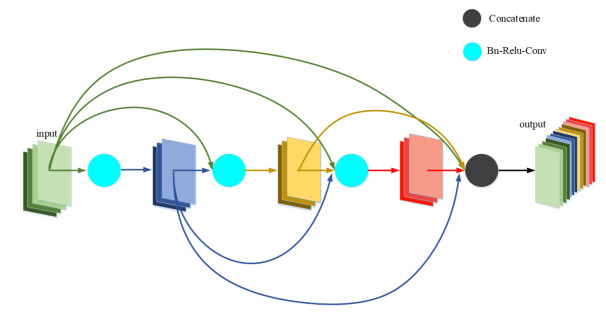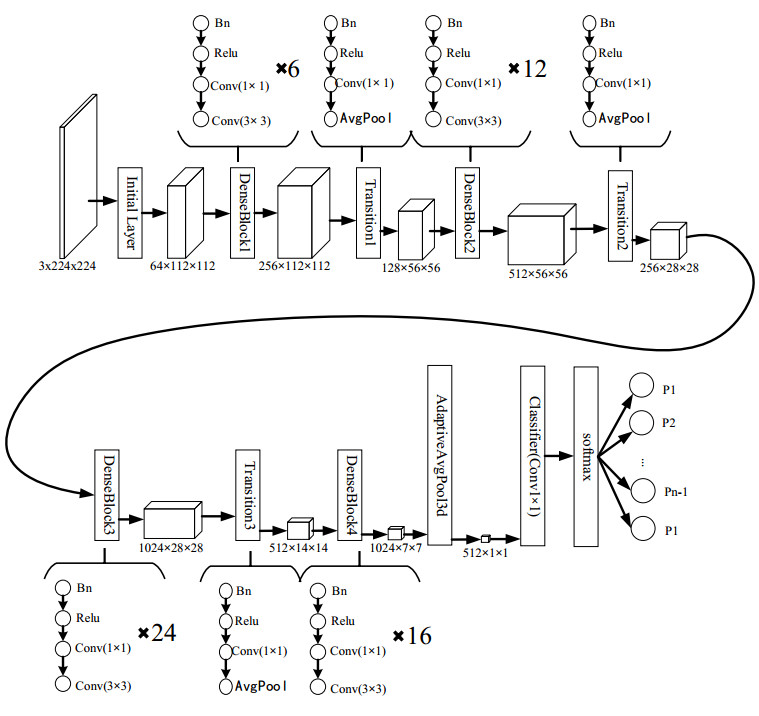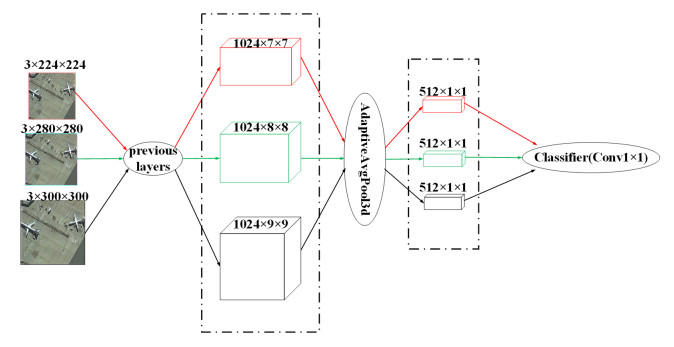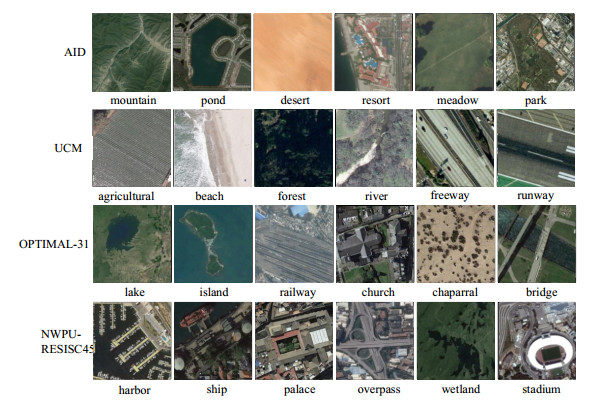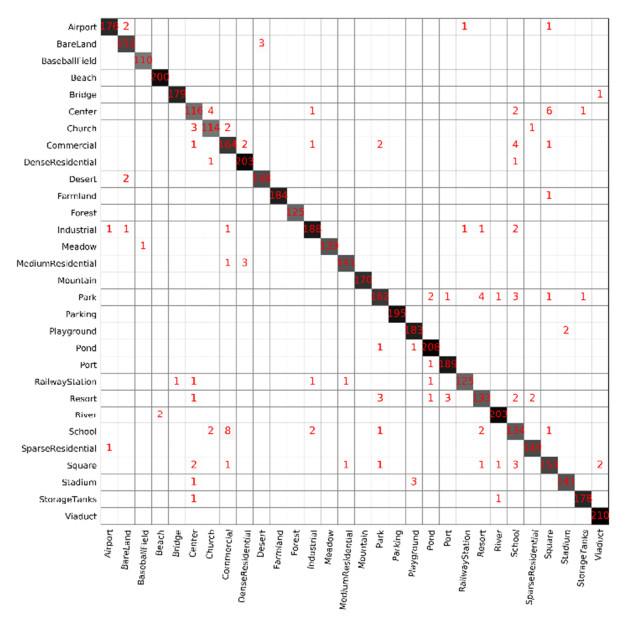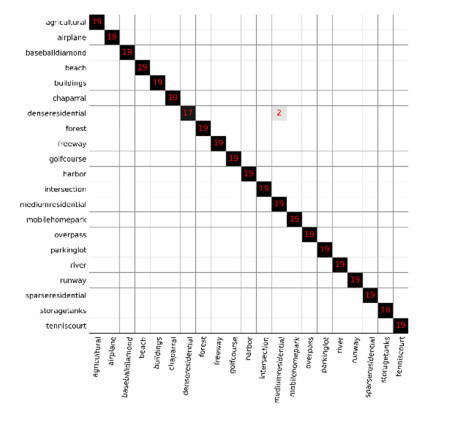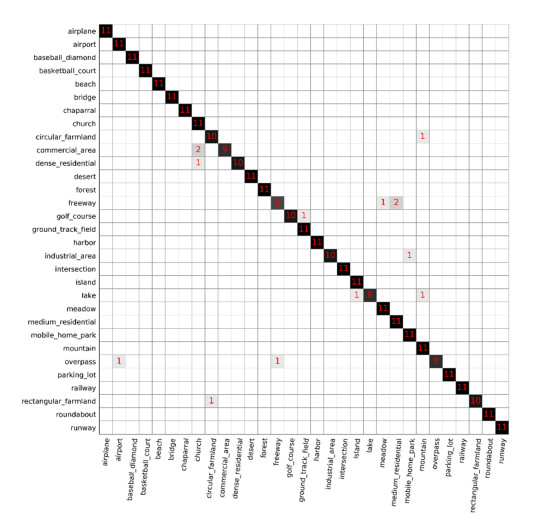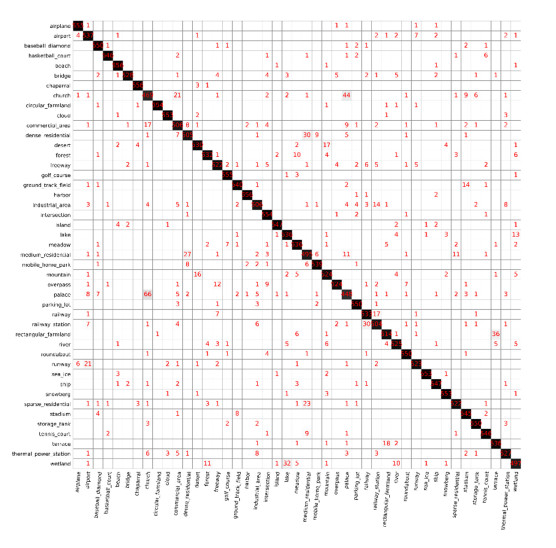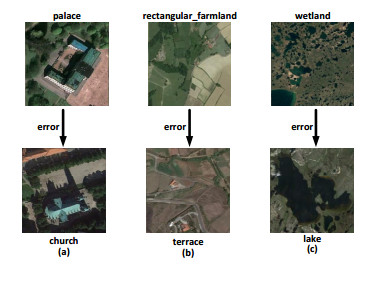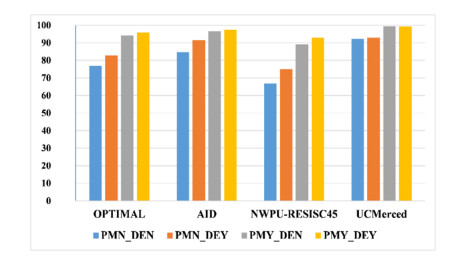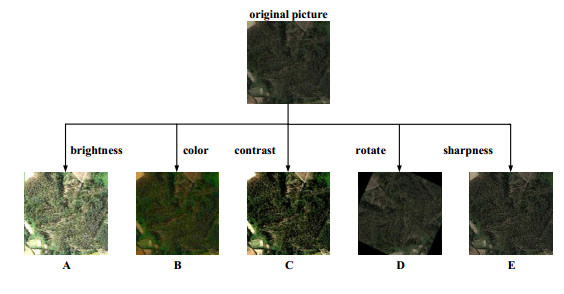| 1.
|
Jianming Zhang, Chaoquan Lu, Jin Wang, Xiao-Guang Yue, Se-Jung Lim, Zafer Al-Makhadmeh, Amr Tolba,
Training Convolutional Neural Networks with Multi-Size Images and Triplet Loss for Remote Sensing Scene Classification,
2020,
20,
1424-8220,
1188,
10.3390/s20041188
|
|
| 2.
|
Jianming Zhang, Wei Wang, Chaoquan Lu, Jin Wang, Arun Kumar Sangaiah,
Lightweight deep network for traffic sign classification,
2020,
75,
0003-4347,
369,
10.1007/s12243-019-00731-9
|
|
| 3.
|
Fan Wu, Xiong Li, Lili Xu, Saru Kumari, Dingbao Lin, Joel J. P. C. Rodrigues,
An anonymous and identity-trackable data transmission scheme for smart grid under smart city notion,
2020,
75,
0003-4347,
307,
10.1007/s12243-020-00765-4
|
|
| 4.
|
M. Cheng, W. Chen, L. -M. Fang, M. -Z. Lou, H. Jin, B. Zhang, L. -L. Zang,
Synthesis, Crystal Structure, and Anti-Gastric Cancer Activity of a Heterometallic Coordination Polymer Based on Flexible 6,6-Dithiodinicotinic Acid,
2020,
61,
0022-4766,
987,
10.1134/S0022476620060207
|
|
| 5.
|
Jianming Zhang, Chaoquan Lu, Jin Wang, Lei Wang, Xiao-Guang Yue,
Concrete Cracks Detection Based on FCN with Dilated Convolution,
2019,
9,
2076-3417,
2686,
10.3390/app9132686
|
|
| 6.
|
Tao Li, Wencong Jiao, Li-Na Wang, Guoqiang Zhong,
Automatic DenseNet Sparsification,
2020,
8,
2169-3536,
62561,
10.1109/ACCESS.2020.2984130
|
|
| 7.
|
Luogen Yao,
Global exponential stability on anti-periodic solutions in proportional delayed HIHNNs,
2021,
33,
0952-813X,
47,
10.1080/0952813X.2020.1721571
|
|
| 8.
|
Non-Cooperative Spectrum Access Strategy Based on Impatient Behavior of Secondary Users in Cognitive Radio Networks,
2019,
8,
2079-9292,
995,
10.3390/electronics8090995
|
|
| 9.
|
Jiaohua Qin, Jianhua Chen, Xuyu Xiang, Yun Tan, Wentao Ma, Jing Wang,
A privacy-preserving image retrieval method based on deep learning and adaptive weighted fusion,
2020,
17,
1861-8200,
161,
10.1007/s11554-019-00909-3
|
|
| 10.
|
Hong Zhang, Chaofan Qian,
Convergence analysis on inertial proportional delayed neural networks,
2020,
2020,
1687-1847,
10.1186/s13662-020-02737-3
|
|
| 11.
|
Jianming Zhang, Yang Liu, Hehua Liu, Jin Wang,
Learning Local–Global Multiple Correlation Filters for Robust Visual Tracking with Kalman Filter Redetection,
2021,
21,
1424-8220,
1129,
10.3390/s21041129
|
|
| 12.
|
Yirui Wu, Pengfei Han, Zhan Zheng,
Instant water body variation detection via analysis on remote sensing imagery,
2021,
1861-8200,
10.1007/s11554-020-01062-y
|
|
| 13.
|
Khalid A. AlAfandy, Hicham Hicham, Mohamed Lazaar, Mohammed Al Achhab,
Investment of Classic Deep CNNs and SVM for Classifying Remote Sensing Images,
2020,
5,
24156698,
652,
10.25046/aj050580
|
|
| 14.
|
Jianming Zhang, Zhipeng Xie, Juan Sun, Xin Zou, Jin Wang,
A Cascaded R-CNN With Multiscale Attention and Imbalanced Samples for Traffic Sign Detection,
2020,
8,
2169-3536,
29742,
10.1109/ACCESS.2020.2972338
|
|
| 15.
|
Adaptive Leader-Follower Formation Control of Under-actuated Surface Vessels with Model Uncertainties and Input Constraints,
2019,
9,
2076-3417,
3901,
10.3390/app9183901
|
|
| 16.
|
Hao Gao, Lin Cao, Dingfeng Yu, Xuejun Xiong, Maoyong Cao,
Semantic Segmentation of Marine Remote Sensing Based on a Cross Direction Attention Mechanism,
2020,
8,
2169-3536,
142483,
10.1109/ACCESS.2020.3013898
|
|
| 17.
|
Yu Quan, Zhixin Li, Canlong Zhang, Huifang Ma,
Object Detection Model Based on Deep Dilated Convolutional Networks by Fusing Transfer Learning,
2019,
7,
2169-3536,
178699,
10.1109/ACCESS.2019.2958817
|
|
| 18.
|
Yuxiang Yang, Weiwei Xing, Shunli Zhang, Limin Gao, Qi Yu, Xiaoping Che, Wei Lu,
Visual Tracking With Long-Short Term Based Correlation Filter,
2020,
8,
2169-3536,
20257,
10.1109/ACCESS.2020.2968125
|
|
| 19.
|
Jian Zhang, Chuangxia Huang,
Dynamics analysis on a class of delayed neural networks involving inertial terms,
2020,
2020,
1687-1847,
10.1186/s13662-020-02566-4
|
|
| 20.
|
Jian Zhang, Caihong Liu,
A study of a clothing image segmentation method in complex conditions using a features fusion model,
2020,
61,
0005-1144,
150,
10.1080/00051144.2019.1691835
|
|
| 21.
|
Sowmya Natesan, Costas Armenakis, Udayalakshmi Vepakomma,
Individual tree species identification using Dense Convolutional Network (DenseNet) on multitemporal RGB images from UAV,
2020,
8,
2291-3467,
310,
10.1139/juvs-2020-0014
|
|
| 22.
|
Yanli Xu, Qian Cao,
Global asymptotic stability for a nonlinear density-dependent mortality Nicholson’s blowflies system involving multiple pairs of time-varying delays,
2020,
2020,
1687-1847,
10.1186/s13662-020-02569-1
|
|
| 23.
|
Yifei Tian, Wei Song, Long Chen, Yunsick Sung, Jeonghoon Kwak, Su Sun,
A Fast Spatial Clustering Method for Sparse LiDAR Point Clouds Using GPU Programming,
2020,
20,
1424-8220,
2309,
10.3390/s20082309
|
|
| 24.
|
Attoumane Loukmane, Manuel Grana, Mohammed Mestari,
2020,
A Model for Classification of Traffic Signs Using Improved Convolutional Neural Network and Image Enhancement,
978-1-7281-8084-7,
1,
10.1109/ICDS50568.2020.9268761
|
|
| 25.
|
Yuanjing Luo, Jiaohua Qin, Xuyu Xiang, Yun Tan, Qiang Liu, Lingyun Xiang,
Coverless real-time image information hiding based on image block matching and dense convolutional network,
2020,
17,
1861-8200,
125,
10.1007/s11554-019-00917-3
|
|
| 26.
|
Xinliang Liu, Tao Ren, Hongfeng Chen, Yufeng Chen,
Classification of tectonic and non-tectonic seismicity based on convolutional neural network,
2020,
224,
0956-540X,
191,
10.1093/gji/ggaa444
|
|
| 27.
|
Yuantao Chen, Jin Wang, Songjie Liu, Xi Chen, Jie Xiong, Jingbo Xie, Kai Yang,
Multiscale fast correlation filtering tracking algorithm based on a feature fusion model,
2019,
1532-0626,
10.1002/cpe.5533
|
|
| 28.
|
Osama A. Shawky, Ahmed Hagag, El-Sayed A. El-Dahshan, Manal A. Ismail,
A very high-resolution scene classification model using transfer deep CNNs based on saliency features,
2020,
1863-1703,
10.1007/s11760-020-01801-5
|
|
| 29.
|
Hirofumi Noguchi, Shigeki Sugano,
Ephemeral-Cyber-Physical System: A Cloud-Like CPS Using Shared Devices in Open IoT,
2020,
14,
1932-8184,
5176,
10.1109/JSYST.2019.2950719
|
|
| 30.
|
Xiaowei Chen, Yiqi Tao, Lei Tong, Ran Su,
2020,
GIS guided remote sensing image data for rural industry and space interaction mechanism modeling,
978-1-7281-2813-9,
837,
10.1109/ICISC47916.2020.9171164
|
|
| 31.
|
Qian Cao, Guoqiu Wang, Chaofan Qian,
New results on global exponential stability for a periodic Nicholson’s blowflies model involving time-varying delays,
2020,
2020,
1687-1847,
10.1186/s13662-020-2495-4
|
|
| 32.
|
Jianming Zhang, You Wu, Wenjun Feng, Jin Wang,
Spatially Attentive Visual Tracking Using Multi-Model Adaptive Response Fusion,
2019,
7,
2169-3536,
83873,
10.1109/ACCESS.2019.2924944
|
|
| 33.
|
Mohammad Javad Salehpour, Hamid Radmanesh, Seyyed Mohammad Hosseini Rostami, Jin Wang, Hye-Jin Kim,
Effect of Load Priority Modeling on the Size of Fuel Cell as an Emergency Power Unit in a More-Electric Aircraft,
2019,
9,
2076-3417,
3241,
10.3390/app9163241
|
|
| 34.
|
Khalid A. AlAfandy, Hicham Omara, Mohamed Lazaar, Mohammed Al Achhab,
Using Classic Networks for Classifying Remote Sensing Images: Comparative Study,
2020,
5,
24156698,
770,
10.25046/aj050594
|
|
| 35.
|
Seksan Mathulaprangsan, Kitsana Lanthong, Duangpen Jetpipattanapong, Siwadol Sateanpattanakul, Sujin Patarapuwadol,
2020,
Rice Diseases Recognition Using Effective Deep Learning Models,
978-1-7281-6398-7,
386,
10.1109/ECTIDAMTNCON48261.2020.9090709
|
|
| 36.
|
Chaofan Qian, Yuhui Hu,
Novel stability criteria on nonlinear density-dependent mortality Nicholson’s blowflies systems in asymptotically almost periodic environments,
2020,
2020,
1029-242X,
10.1186/s13660-019-2275-4
|
|
| 37.
|
Wei Song, Lingfeng Zhang, Yifei Tian, Simon Fong, Jinming Liu, Amanda Gozho,
CNN-based 3D object classification using Hough space of LiDAR point clouds,
2020,
10,
2192-1962,
10.1186/s13673-020-00228-8
|
|
| 38.
|
Hong Zhang, Yawei Li, Yujie Wu, Zeyu Zhang,
BID: An Effective Blind Image Deblurring Scheme to Estimate the Blur Kernel for Various Scenarios,
2020,
8,
2169-3536,
9185,
10.1109/ACCESS.2020.2964621
|
|
| 39.
|
Dan Tang, Liu Tang, Rui Dai, Jingwen Chen, Xiong Li, Joel J.P.C. Rodrigues,
MF-Adaboost: LDoS attack detection based on multi-features and improved Adaboost,
2020,
106,
0167739X,
347,
10.1016/j.future.2019.12.034
|
|
| 40.
|
Anrui Fu, Bo Wang,
2020,
Portfolio Optimization based on LSTM Neural Network Prediction,
978-1-7281-6853-1,
1,
10.1109/ICNSC48988.2020.9238089
|
|
| 41.
|
Dengyong Zhang, Shanshan Wang, Jin Wang, Arun Kumar Sangaiah, Feng Li, Victor S. Sheng,
Detection of Tampering by Image Resizing Using Local Tchebichef Moments,
2019,
9,
2076-3417,
3007,
10.3390/app9153007
|
|
| 42.
|
Qian Zhang, Yeqi Liu, Chuanyang Gong, Yingyi Chen, Huihui Yu,
Applications of Deep Learning for Dense Scenes Analysis in Agriculture: A Review,
2020,
20,
1424-8220,
1520,
10.3390/s20051520
|
|
| 43.
|
Weiwei Cai, Botao Liu, Zhanguo Wei, Meilin Li, Jiangming Kan,
TARDB-Net: triple-attention guided residual dense and BiLSTM networks for hyperspectral image classification,
2021,
80,
1380-7501,
11291,
10.1007/s11042-020-10188-x
|
|
| 44.
|
Feng Yang, Wentong Li, Haiwei Hu, Wanyi Li, Peng Wang,
Multi-Scale Feature Integrated Attention-Based Rotation Network for Object Detection in VHR Aerial Images,
2020,
20,
1424-8220,
1686,
10.3390/s20061686
|
|
| 45.
|
Shanpeng Liu, Xiong Li, Fan Wu, Junguo Liao, Jin Wang, Dingbao Lin,
A Novel Authentication Protocol with Strong Security for Roaming Service in Global Mobile Networks,
2019,
8,
2079-9292,
939,
10.3390/electronics8090939
|
|
| 46.
|
Lingyan Zhang, Mifang Li, Yujia Zhou, Guangming Lu, Quan Zhou,
Deep Learning Approach for Anterior Cruciate Ligament Lesion Detection: Evaluation of Diagnostic Performance Using Arthroscopy as the Reference Standard,
2020,
52,
1053-1807,
1745,
10.1002/jmri.27266
|
|
| 47.
|
Abtin Riasatian, Morteza Babaie, Danial Maleki, Shivam Kalra, Mojtaba Valipour, Sobhan Hemati, Manit Zaveri, Amir Safarpoor, Sobhan Shafiei, Mehdi Afshari, Maral Rasoolijaberi, Milad Sikaroudi, Mohd Adnan, Sultaan Shah, Charles Choi, Savvas Damaskinos, Clinton JV Campbell, Phedias Diamandis, Liron Pantanowitz, Hany Kashani, Ali Ghodsi, H.R. Tizhoosh,
Fine-Tuning and training of densenet for histopathology image representation using TCGA diagnostic slides,
2021,
70,
13618415,
102032,
10.1016/j.media.2021.102032
|
|
| 48.
|
Yuantao Chen, Jiajun Tao, Jin Wang, Xi Chen, Jingbo Xie, Jie Xiong, Kai Yang,
The Novel Sensor Network Structure for Classification Processing Based on the Machine Learning Method of the ACGAN,
2019,
19,
1424-8220,
3145,
10.3390/s19143145
|
|
| 49.
|
Biserka Petrovska, Tatjana Atanasova-Pacemska, Roberto Corizzo, Paolo Mignone, Petre Lameski, Eftim Zdravevski,
Aerial Scene Classification through Fine-Tuning with Adaptive Learning Rates and Label Smoothing,
2020,
10,
2076-3417,
5792,
10.3390/app10175792
|
|
| 50.
|
Qian Cao, Guoqiu Wang,
Dynamic analysis on a delayed nonlinear density-dependent mortality Nicholson's blowflies model,
2020,
0020-7179,
1,
10.1080/00207179.2020.1725134
|
|
| 51.
|
Chunyong Yin, Biao Zhou, Zhichao Yin, Jin Wang,
Local privacy protection classification based on human-centric computing,
2019,
9,
2192-1962,
10.1186/s13673-019-0195-4
|
|
| 52.
|
Hong Zhang, Qian Cao, Hedi Yang,
Asymptotically almost periodic dynamics on delayed Nicholson-type system involving patch structure,
2020,
2020,
1029-242X,
10.1186/s13660-020-02366-0
|
|
| 53.
|
JinWoo Yoo, JaeWook Shin, PooGyeon Park,
A bias-compensated proportionate NLMS algorithm with noisy input signals,
2019,
32,
10745351,
e4167,
10.1002/dac.4167
|
|
| 54.
|
Min Beom Lee, Yu Hwan Kim, Kang Ryoung Park,
Conditional Generative Adversarial Network- Based Data Augmentation for Enhancement of Iris Recognition Accuracy,
2019,
7,
2169-3536,
122134,
10.1109/ACCESS.2019.2937809
|
|
| 55.
|
Md. Tarek Habib, Md. Ariful Islam Arif, Sumaita Binte Shorif, Mohammad Shorif Uddin, Farruk Ahmed,
2021,
Chapter 10,
978-981-33-6423-3,
143,
10.1007/978-981-33-6424-0_10
|
|
| 56.
|
Chaofan Qian,
New periodic stability for a class of Nicholson's blowflies models with multiple different delays,
2020,
0020-7179,
1,
10.1080/00207179.2020.1766118
|
|
| 57.
|
Jiajia Zhao, Wangyang Cai, Hairong He, Wei Wang, Ming Tang, Jin Wang,
Honeycomb pure-silica-core fiber array with air-hole cladding for image transmission,
2019,
2,
2578-7519,
2470,
10.1364/OSAC.2.002470
|
|
| 58.
|
B. H. Shekar, Habtu Hailu,
2021,
Chapter 15,
978-981-16-1085-1,
161,
10.1007/978-981-16-1086-8_15
|
|
| 59.
|
Sk Maidul Islam, Subhankar Joardar, Arif Ahmed Sekh,
2021,
Chapter 9,
978-981-16-1091-2,
100,
10.1007/978-981-16-1092-9_9
|
|
| 60.
|
Sikha Das, Samarjit Kar, Arif Ahmed Sekh,
2021,
Chapter 38,
978-981-16-1091-2,
455,
10.1007/978-981-16-1092-9_38
|
|
| 61.
|
Emilio Rapuano, Gabriele Meoni, Tommaso Pacini, Gianmarco Dinelli, Gianluca Furano, Gianluca Giuffrida, Luca Fanucci,
An FPGA-Based Hardware Accelerator for CNNs Inference on Board Satellites: Benchmarking with Myriad 2-Based Solution for the CloudScout Case Study,
2021,
13,
2072-4292,
1518,
10.3390/rs13081518
|
|
| 62.
|
Weiwei Cai, Zhanguo Wei, Runmin Liu, Yuan Zhuang, Yan Wang, Xin Ning,
Remote Sensing Image Recognition Based on Multi-attention Residual Fusion Networks,
2021,
1,
2788-6743,
1,
10.52810/TPRIS.2021.100005
|
|
| 63.
|
Sk Maidul Islam, Subhankar Joardar, Arif Ahmed Sekh,
2022,
Chapter 17,
978-3-031-22484-3,
180,
10.1007/978-3-031-22485-0_17
|
|
| 64.
|
Renfei Yang, Fang Luo, Fu Ren, Wenli Huang, Qianyi Li, Kaixuan Du, Dingdi Yuan,
Identifying Urban Wetlands through Remote Sensing Scene Classification Using Deep Learning: A Case Study of Shenzhen, China,
2022,
11,
2220-9964,
131,
10.3390/ijgi11020131
|
|
| 65.
|
Rishabh Kapoor, William Sleeman, Jatinder Palta, Elisabeth Weiss,
3D deep convolution neural network for radiation pneumonitis prediction following stereotactic body radiotherapy,
2022,
1526-9914,
10.1002/acm2.13875
|
|
| 66.
|
Ayşe CENGİZ, Derya AVCI,
Uydu İmgelerine Derin Öğrenme Tabanlı Süper Çözünürlük Yöntemlerinin Uygulanması,
2021,
21,
2149-3367,
1069,
10.35414/akufemubid.829644
|
|
| 67.
|
Yang Zhang, Ruohan Zong, Lanyu Shang, Dong Wang,
On Coupling Classification and Super-Resolution in Remote Urban Sensing: An Integrated Deep Learning Approach,
2022,
60,
0196-2892,
1,
10.1109/TGRS.2022.3169703
|
|
| 68.
|
Mayank Jha, Om Amrit, Harsh Jain, Mayank Sharma, Achal Kaushik,
2022,
Chapter 53,
978-981-16-2122-2,
681,
10.1007/978-981-16-2123-9_53
|
|
| 69.
|
Jianming Zhang, Wenjun Feng, Tingyu Yuan, Jin Wang, Arun Kumar Sangaiah,
SCSTCF: Spatial-Channel Selection and Temporal Regularized Correlation Filters for visual tracking,
2022,
118,
15684946,
108485,
10.1016/j.asoc.2022.108485
|
|
| 70.
|
Zhangdong Wang, Jiaohua Qin, Xuyu Xiang, Yun Tan, Neal N. Xiong,
Criss-Cross Attentional Siamese Networks for Object Tracking,
2022,
73,
1546-2226,
2931,
10.32604/cmc.2022.028896
|
|
| 71.
|
Sk Maidul Islam, Subhankar Joardar, Debi Prosad Dogra, Arif Ahmed Sekh,
Ornament Image Retrieval Using Multimodal Fusion,
2021,
2,
2662-995X,
10.1007/s42979-021-00734-1
|
|
| 72.
|
Mengxi Liu, Haojun Deng, Wen Dong,
Identification of Mangrove Invasive Plant Derris Trifoliate Using UAV Images and Deep Learning Algorithms,
2022,
15,
1939-1404,
10017,
10.1109/JSTARS.2022.3223227
|
|
| 73.
|
Berk Arican , Erdem Safa Akkul, Levent Çarkacioglu, Behçet U. Töreyin, Nazzareno Pierdicca, Lorenzo Bruzzone, Francesca Bovolo,
2022,
Compressed domain classification of remote sensing scene images based on sub-band data fusion,
9781510655379,
8,
10.1117/12.2635862
|
|
| 74.
|
Ratnabali Pal, Samarjit Kar, Arif Ahmed Sekh,
2023,
Chapter 53,
978-981-19-6630-9,
771,
10.1007/978-981-19-6631-6_53
|
|
| 75.
|
Zhongbin Su, Wei Li, Zheng Ma, Rui Gao,
An improved U-Net method for the semantic segmentation of remote sensing images,
2022,
52,
0924-669X,
3276,
10.1007/s10489-021-02542-9
|
|
| 76.
|
Genji Yuan, Jianbo Li, Yue Wang, Xianglong Meng,
2022,
Chapter 37,
978-3-031-19213-5,
441,
10.1007/978-3-031-19214-2_37
|
|
| 77.
|
Sk Maidul Islam, Subhankar Joardar, Arif Ahmed Sekh,
DSSN: dual shallow Siamese network for fashion image retrieval,
2022,
1380-7501,
10.1007/s11042-022-14204-0
|
|
| 78.
|
Pablo Gomez, Gabriele Meoni,
MSMatch: Semisupervised Multispectral Scene Classification With Few Labels,
2021,
14,
1939-1404,
11643,
10.1109/JSTARS.2021.3126082
|
|
| 79.
|
Biswajit Jena, Gopal Krishna Nayak, Sanjay Saxena,
Convolutional neural network and its pretrained models for image classification and object detection: A survey,
2022,
34,
1532-0626,
10.1002/cpe.6767
|
|
| 80.
|
Bharani Basapathy Rudra, Gururaj Murtugudde,
Remote sensing scene classification using visual geometry group 19 model and multi objective grasshopper optimization algorithm,
2022,
13,
0975-6809,
3017,
10.1007/s13198-022-01790-3
|
|
| 81.
|
Khalid A. AlAfandy, Hicham Omara, Hala S. El-Sayed, Mohammed Baz, Mohamed Lazaar, Osama S. Faragallah, Mohammed Al Achhab,
Efficient Classification of Remote Sensing Images Using Two Convolution Channels and SVM,
2022,
72,
1546-2226,
739,
10.32604/cmc.2022.022457
|
|
| 82.
|
Erdem Safa Akkul, Berk Arıcan, Behçet Uğur Töreyin,
2021,
Chapter 54,
978-3-030-88112-2,
669,
10.1007/978-3-030-88113-9_54
|
|
| 83.
|
Xiaosong Xie, Guangsong Yang, Mengxi Jiang, Qiubo Ye, Chen-Fu Yang,
A Kind of Wireless Modulation Recognition Method Based on DenseNet and BLSTM,
2021,
9,
2169-3536,
125706,
10.1109/ACCESS.2021.3111406
|
|
| 84.
|
You Xuan Thung, Tom Benson, Nikita Klimenko,
2022,
Detecting languages in streetscapes using deep convolutional neural networks,
978-1-6654-8045-1,
1711,
10.1109/BigData55660.2022.10020745
|
|
| 85.
|
Jiaogen Zhou, Yang Wang, Caiyun Zhang, Wenbo Wu, Yanzhu Ji, Yeai Zou,
Eyebirds: Enabling the Public to Recognize Water Birds at Hand,
2022,
12,
2076-2615,
3000,
10.3390/ani12213000
|
|
| 86.
|
Tong Liu, Tao Chen,
2021,
A Comparation of CNN and DenseNet for Landslide Detection,
978-1-6654-0369-6,
8440,
10.1109/IGARSS47720.2021.9555000
|
|
| 87.
|
Jianming Zhang, Kai Wang, Yaoqi He, Lidan Kuang,
Visual Object Tracking via Cascaded RPN Fusion and Coordinate Attention,
2022,
132,
1526-1506,
909,
10.32604/cmes.2022.020471
|
|
| 88.
|
Moisés Cordeiro-Costas, Daniel Villanueva, Pablo Eguía-Oller, Enrique Granada-Álvarez,
Machine Learning and Deep Learning Models Applied to Photovoltaic Production Forecasting,
2022,
12,
2076-3417,
8769,
10.3390/app12178769
|
|
| 89.
|
Wassana Naku, Anand K. Nambisan, Muhammad Roman, Chen Zhu, Rex E. Gerald, Jie Huang,
Identification of Volatile Organic Liquids by Combining an Array of Fiber-Optic Sensors and Machine Learning,
2023,
8,
2470-1343,
4597,
10.1021/acsomega.2c05451
|
|
| 90.
|
Ying Xu, Zefeng Lu, Licai Liu, Daseng Cai,
A Classification Algorithm Based on Complex Number Feature,
2020,
8,
2169-3536,
17842,
10.1109/ACCESS.2020.2966017
|
|
| 91.
|
2022,
Customized EfficientNet for Histopathology Image Representation,
978-1-6654-8768-9,
01,
10.1109/SSCI51031.2022.10022191
|
|
| 92.
|
Sara S. Satake, Rodrigo Calvo, Alceu S. Britto, Yandre M. G. Costa,
2022,
Chapter 10,
978-3-030-96877-9,
108,
10.1007/978-3-030-96878-6_10
|
|
| 93.
|
Yan Jiang, Guisheng Yin, Ye Yuan, Qingan Da, Mohamed Amine Ferrag,
Project Gradient Descent Adversarial Attack against Multisource Remote Sensing Image Scene Classification,
2021,
2021,
1939-0122,
1,
10.1155/2021/6663028
|
|
| 94.
|
Naftaly Wambugu, Yiping Chen, Zhenlong Xiao, Kun Tan, Mingqiang Wei, Xiaoxue Liu, Jonathan Li,
Hyperspectral image classification on insufficient-sample and feature learning using deep neural networks: A review,
2021,
105,
15698432,
102603,
10.1016/j.jag.2021.102603
|
|
| 95.
|
Shamik Tiwari, Anurag Jain,
A lightweight capsule network architecture for detection of
COVID
‐19 from lung
CT scans
,
2022,
32,
0899-9457,
419,
10.1002/ima.22706
|
|
| 96.
|
Heesang Eom, Jongryun Roh, Yuli Sun Hariyani, Suwhan Baek, Sukho Lee, Sayup Kim, Cheolsoo Park,
Deep Learning-Based Optimal Smart Shoes Sensor Selection for Energy Expenditure and Heart Rate Estimation,
2021,
21,
1424-8220,
7058,
10.3390/s21217058
|
|
| 97.
|
Ivica Dimitrovski, Ivan Kitanovski, Dragi Kocev, Nikola Simidjievski,
Current trends in deep learning for Earth Observation: An open-source benchmark arena for image classification,
2023,
197,
09242716,
18,
10.1016/j.isprsjprs.2023.01.014
|
|
| 98.
|
Yang Zhang, Ruohan Zong, Lanyu Shang, Md Tahmid Rashid, Dong Wang,
2021,
SuperClass: A Deep Duo-Task Learning Approach to Improving QoS in Image-driven Smart Urban Sensing Applications,
978-1-6654-1494-4,
1,
10.1109/IWQOS52092.2021.9521332
|
|
| 99.
|
Wassana Naku, Chen Zhu, Anand K. Nambisan, Rex E. Gerald, Jie Huang,
Machine learning identifies liquids employing a simple fiber-optic tip sensor,
2021,
29,
1094-4087,
40000,
10.1364/OE.441144
|
|
| 100.
|
Law Kumar Singh, Hitendra Garg, Munish Khanna,
Performance evaluation of various deep learning based models for effective glaucoma evaluation using optical coherence tomography images,
2022,
81,
1380-7501,
27737,
10.1007/s11042-022-12826-y
|
|
| 101.
|
Junli Hu, Qiangyi Li,
Study on the Lightweighting Strategy of Target Detection Model with Deep Learning,
2022,
2022,
1687-5699,
1,
10.1155/2022/7234888
|
|
| 102.
|
Waid Nimri, Yong Wang, Ziang Zhang, Chengbin Deng, Kristofor Sellstrom,
Data-driven approaches and model-based methods for detecting and locating leaks in water distribution systems: a literature review,
2023,
0941-0643,
10.1007/s00521-023-08497-x
|
|
| 103.
|
Junfu Fan, Zongwen Shi, Zhoupeng Ren, Yuke Zhou, Min Ji,
DDPM-SegFormer: Highly refined feature land use and land cover segmentation with a fused denoising diffusion probabilistic model and transformer,
2024,
133,
15698432,
104093,
10.1016/j.jag.2024.104093
|
|
| 104.
|
Aakash Thapa, Teerayut Horanont, Bipul Neupane, Jagannath Aryal,
Deep Learning for Remote Sensing Image Scene Classification: A Review and Meta-Analysis,
2023,
15,
2072-4292,
4804,
10.3390/rs15194804
|
|
| 105.
|
Shuhao Liu, Xinwei Yao, Xiangjie Kong,
2024,
Obstruction detection and recovery in weather radar images using deep learning,
9781510680258,
74,
10.1117/12.3029064
|
|
| 106.
|
Zhang Qingmiao, Zhang Dinghua,
Novel hawk swarm‐optimized deep learning classification with K‐nearest neighbor based decision making for autonomous vehicle movement controller,
2024,
36,
1532-0626,
10.1002/cpe.8241
|
|
| 107.
|
Rajashree Gadhave, R. R. Sedamkar, Sujata Alegavi,
2023,
2984,
0094-243X,
020005,
10.1063/5.0175906
|
|
| 108.
|
Adekanmi Adeyinka Adegun, Serestina Viriri, Jules-Raymond Tapamo,
Review of deep learning methods for remote sensing satellite images classification: experimental survey and comparative analysis,
2023,
10,
2196-1115,
10.1186/s40537-023-00772-x
|
|
| 109.
|
Hazret Tekin, Yılmaz Kaya,
A new approach for heart disease detection using Motif transform-based CWT’s time-frequency images with DenseNet deep transfer learning methods,
2024,
69,
0013-5585,
407,
10.1515/bmt-2023-0580
|
|
| 110.
|
Bo Wang, Hong Zhao, Xiaoyi Wang, Guanting Lyu, Kuangmin Chen, Jinfeng Xu, Guishan Cui, Liheng Zhong, Le Yu, Huabing Huang, Qinghong Sheng,
Bamboo classification based on GEDI, time-series Sentinel-2 images and whale-optimized, dual-channel DenseNet: A case study in Zhejiang province, China,
2024,
209,
09242716,
312,
10.1016/j.isprsjprs.2024.02.002
|
|
| 111.
|
Sk Maidul Islam, Subhankar Joardar, Arif Ahmed Sekh,
BangleFIR: bridging the gap in fashion image retrieval with a novel dataset of bangles,
2024,
1573-7721,
10.1007/s11042-024-19698-4
|
|
| 112.
|
Rakesh Meena, Sunil Joshi, Sandeep Raghuwanshi,
2023,
Chapter 30,
978-981-99-2099-0,
373,
10.1007/978-981-99-2100-3_30
|
|
| 113.
|
Salma N, Madhuri G R, Basavaraj Jagadale,
Advancing remote sensing: a unified deep learning approach with pretrained and custom architectures for high-precision classification,
2024,
99,
0031-8949,
116012,
10.1088/1402-4896/ad8491
|
|
| 114.
|
Mohammed Diykh, Mumtaz Ali, Mehdi Jamei, Shahab Abdulla, Md Palash Uddin, Aitazaz Ahsan Farooque, Abdulhaleem H. Labban, Hussein Alabdally,
Empirical curvelet transform based deep DenseNet model to predict NDVI using RGB drone imagery data,
2024,
221,
01681699,
108964,
10.1016/j.compag.2024.108964
|
|
| 115.
|
Yifan Liu, Qiudong Yu, Shuze Geng,
Real-time and lightweight detection of grape diseases based on Fusion Transformer YOLO,
2024,
15,
1664-462X,
10.3389/fpls.2024.1269423
|
|
| 116.
|
Moisés Cordeiro-Costas, Daniel Villanueva, Pablo Eguía-Oller, Miguel Martínez-Comesaña, Sérgio Ramos,
Load Forecasting with Machine Learning and Deep Learning Methods,
2023,
13,
2076-3417,
7933,
10.3390/app13137933
|
|
| 117.
|
Chen Zhao, Renjun Shuai, Li Ma, Wenjia Liu, Die Hu, Menglin Wu,
Dermoscopy Image Classification Based on StyleGAN and DenseNet201,
2021,
9,
2169-3536,
8659,
10.1109/ACCESS.2021.3049600
|
|
| 118.
|
Matheus H. C. Leme, Vinicius S. Simm, Douglas Rorie Tanno, Yandre M. G. Costa, Marcos Aurélio Domingues,
2024,
Chapter 52,
978-3-031-49017-0,
730,
10.1007/978-3-031-49018-7_52
|
|
| 119.
|
Chao Liu, Xueqing Yu, Dingyu Wang, Tingting Jiang,
2024,
Chapter 6,
978-3-031-72085-7,
57,
10.1007/978-3-031-72086-4_6
|
|
| 120.
|
Lirong Yin, Lei Wang, Jianqiang Li, Siyu Lu, Jiawei Tian, Zhengtong Yin, Shan Liu, Wenfeng Zheng,
YOLOV4_CSPBi: Enhanced Land Target Detection Model,
2023,
12,
2073-445X,
1813,
10.3390/land12091813
|
|
| 121.
|
Farhan Ullah, Irfan Ullah, Khalil Khan, Salabat Khan, Farhan Amin,
Advances in deep neural network-based hyperspectral image classification and feature learning with limited samples: a survey,
2025,
55,
0924-669X,
10.1007/s10489-024-06139-w
|
|
| 122.
|
Mingqi Wang, Shengpeng Wan, Junsong Yu,
EFPI Solution Type and Concentration Sensing System Based on ConvNeXt Network Model,
2024,
73,
0018-9456,
1,
10.1109/TIM.2024.3472888
|
|
| 123.
|
Tianzhen Yin, Yankun Peng, Kuanglin Chao, Yongyu Li,
Emerging trends in SERS-based veterinary drug detection: multifunctional substrates and intelligent data approaches,
2025,
9,
2396-8370,
10.1038/s41538-025-00393-z
|
|
| 124.
|
Seyyed Ali Jahani, Keyvan Mohebbi, Farsad Zamani Boroujeni,
Improving Scene Recognition in Remote Sensing Using Deep Learning and Feature Selector,
2024,
21,
0365-3196,
69,
10.61186/jsdp.21.3.69
|
|
| 125.
|
Ritu Aggarwal, Gulbir Singh, S. B. Goyal, Anurag Jain, Tanupriya Choudhury,
2025,
Chapter 4,
978-3-031-86071-3,
40,
10.1007/978-3-031-86072-0_4
|
|
| 126.
|
Karim Malik, Colin Robertson,
Structural Similarity-Guided Siamese U-Net Model for Detecting Changes in Snow Water Equivalent,
2025,
17,
2072-4292,
1631,
10.3390/rs17091631
|
|
| 127.
|
Manqiu Li, Bo Ma,
2025,
Scene Recognition with Limited Capture using Domain Adaptation,
979-8-3315-0796-1,
701,
10.1109/NNICE64954.2025.11063860
|
|
| 128.
|
Mohamed G. Khattap, Mohamed Abd Elaziz, Mohamed Bekheet, Mohamed Zakaria El-Sayed, Abdelghani Dahou, Hassan Ahmed Eleraky, Hend Galal Eldeen Mohamed Ali Hassan,
2024,
Efficient Classification of Multiple Sclerosis and Idiopathic Transverse Myelitis Using CNN Feature Extraction and Walrus Optimizer on MRI Scans,
979-8-3315-4207-8,
1,
10.1109/CSDGAIS64098.2024.11064825
|
|
| 129.
|
Karim Malik, Isteyak Isteyak, Colin Robertson,
Estimating Snow-Related Daily Change Events in the Canadian Winter Season: A Deep Learning-Based Approach,
2025,
11,
2313-433X,
239,
10.3390/jimaging11070239
|
|









 DownLoad:
DownLoad:
